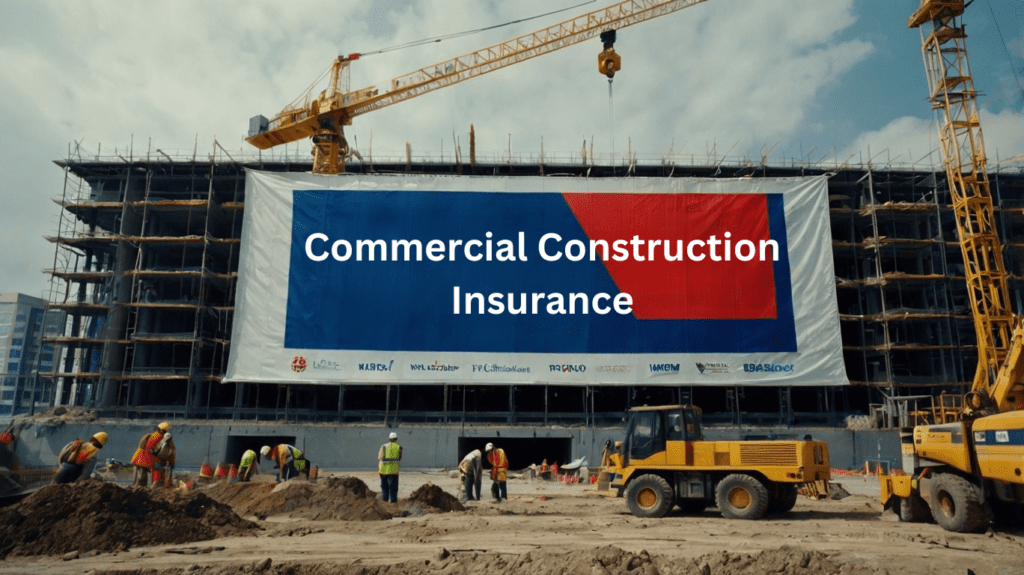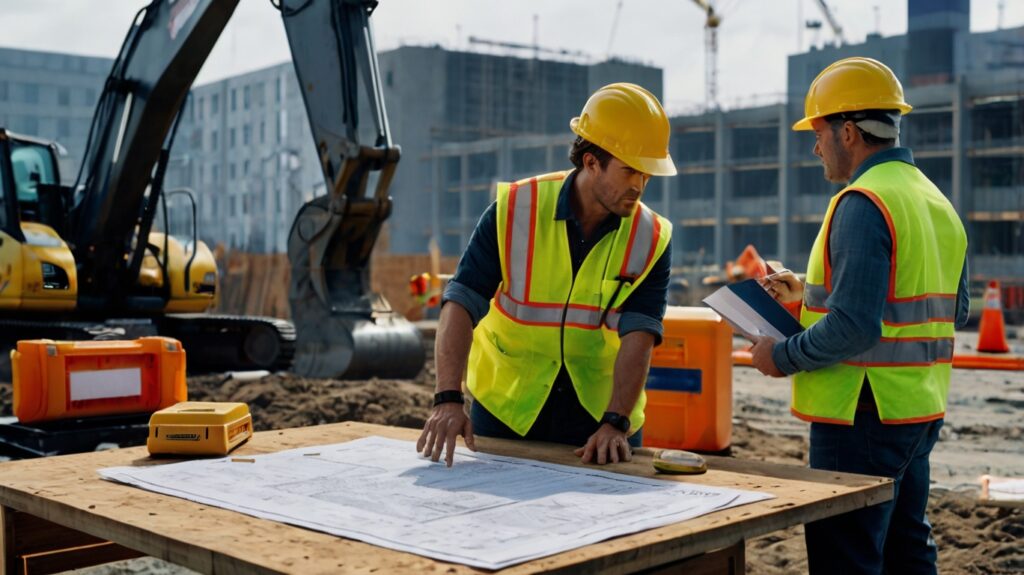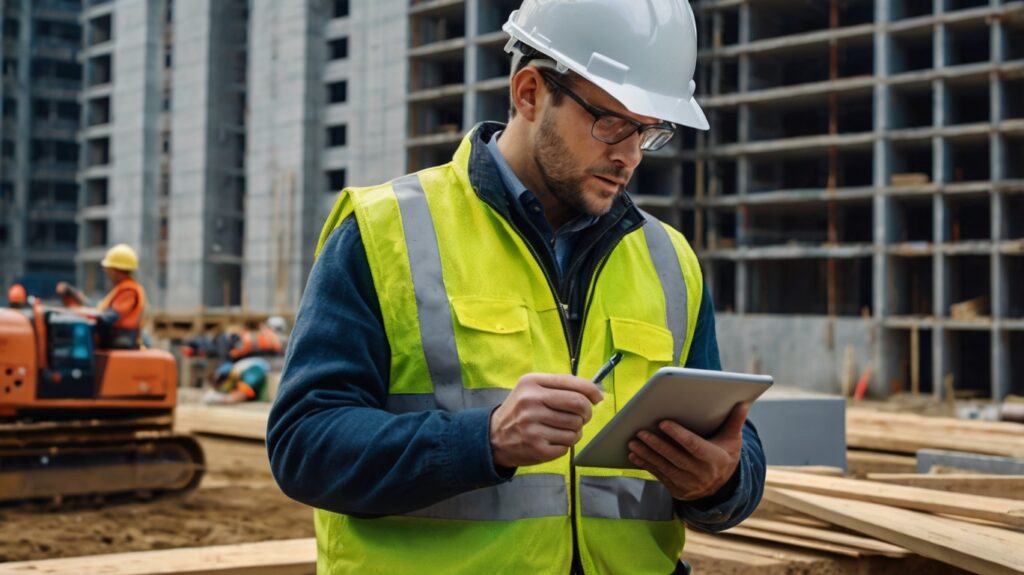- Overview of Commercial Construction Insurance
- Understanding Risk in Construction Projects
- General Liability and Its Importance
- Workers Compensation: Protecting Your Team
- Builder’s Risk Insurance Explained
- Equipment and Materials Coverage
- Navigating Legal and Regulatory Requirements
- Tailoring Coverages to Your Project Needs
- Best Practices for Risk Management in Construction
Commercial construction projects represent some of the most intricate and risky ventures in today’s business landscape. They involve high-value investments, unique operational hazards, and a myriad of legal and regulatory challenges. As such, comprehensive insurance coverage is not just a precaution—it’s a necessity. The right insurance policy protects your business, your employees, and your clients while ensuring project continuity and financial stability. In this article, we explore the essential coverages offered by commercial construction insurance and provide insights for understanding risks, navigating legal requirements, and optimizing risk management practices.

1. Overview of Commercial Construction Insurance
Commercial construction insurance is designed to offer protection at nearly every stage of a construction project. It features multiple components that address the various liabilities and unforeseen incidents that might occur on site. These policies are tailored to the complicated nature of construction work and cover everything from bodily injury and property damage to the loss of equipment and materials. With proper coverage, contractors and developers ensure that a single misstep does not result in insurmountable financial loss.
2. Understanding Risk in Construction Projects
Construction projects are complex operations with multiple simultaneous risks. These risks can be categorized into two key areas: physical damage to property and equipment, and liability stemming from accidents or regulatory infringements. Every element—from weather-related disturbances to onsite accidents—adds layers of uncertainty. An effective commercial construction insurance policy acknowledges these risks by providing targeted coverages that address specific hazards. By carefully analyzing potential threats such as falls, machine malfunctions, structural failures, and environmental hazards, insured parties can design policies that offer comprehensive protection.
3. General Liability and Its Importance
General liability insurance remains at the cornerstone of most commercial construction insurance programs. Coverage under this policy protects against claims of bodily injury, property damage, and personal injury incurred during construction activities. Consider a situation where a visitor missteps on a construction site and suffers a serious injury. Liability insurance can relieve the financial strain of medical expenses, legal fees, and potential settlements. In this high-risk environment, having robust general liability coverage is crucial. It acts as a financial safety net that helps maintain the long-term viability of construction operations, protecting not just the business but also clients and subcontractors from unanticipated legal claims.

4. Workers Compensation: Protecting Your Team
Construction projects are among the most hazardous work environments, making workers compensation insurance indispensable. This coverage is designed to support injured employees, providing benefits that cover medical treatment, wage replacement during recovery, and rehabilitation costs. Given that a single accident can result in significant financial and operational setbacks, workers compensation is not only a legal requirement in many regions but also an ethical business practice. It reflects a company’s commitment to protecting its workforce. A well-structured workers compensation program minimizes downtime after injuries, ensuring projects remain on schedule while providing vital support to team members in need.
5. Builder’s Risk Insurance Explained
While general liability and workers compensation address many common risks, builder’s risk insurance fills a critical gap by protecting the physical construction project itself. Builder’s risk policies cover a broad array of perils including fire, theft, vandalism, and natural disasters. By insuring the structure while it is under construction, contractors can recover the cost of damaged or lost materials, equipment, and even temporary structures. This coverage is particularly significant when construction projects involve custom-built components or high-value installations. Builder’s risk insurance also extends toward transitional processes such as installation and commissioning, making it a vital asset for managing project value until completion.
6. Equipment and Materials Coverage
In any construction project, timely access to functional equipment and materials is essential. Equipment and materials coverage is specifically designed to protect the tools, machinery, and building supplies critical to the project’s progress. Whether it’s a costly piece of heavy machinery, essential hand tools, or specialized raw materials, losing these assets can result in high replacement costs and project delays. This coverage typically includes protection against direct physical loss or damage due to various events such as theft or consequential damages caused by environmental conditions. With this policy in place, contractors can confidently invest in the latest technologies and high-grade materials, knowing that unexpected losses will be adequately covered.

7. Navigating Legal and Regulatory Requirements
Compliance with legal and regulatory mandates is a focal point in the construction industry. Construction companies must navigate a myriad of local, state, and federal regulations designed to ensure safety, environmental protection, and fair labor practices. Insurance policies for commercial construction are often structured to help businesses meet these requirements. For instance, many policies are crafted to satisfy local statutory requirements for workers compensation and general liability coverage. Failing to comply with these legal obligations can result in fines, project stoppages, or even litigation. As such, staying informed about evolving regulations and ensuring that insurance coverages align with these mandates is a best practice that safeguards both the project and the company’s reputation.
8. Tailoring Coverages to Your Project Needs
Not all construction projects are created equal; they come in various sizes and complexities. Consequently, commercial construction insurance policies must be flexible enough to tailor coverages to individual project needs. Projects in urban environments, for example, might need additional protections against site congestion and higher incidences of theft or vandalism. Conversely, projects in remote areas might require specialized policies to cope with transportation challenges, extreme weather, or limited access to emergency services. Customizing insurance solutions involves a thorough risk assessment to identify vulnerabilities unique to the project. By working closely with insurance providers and risk management experts, contractors can create bespoke policies that offer optimal protection without unnecessary premiums, ensuring efficient allocation of resources.
9. Best Practices for Risk Management in Construction
Effective risk management goes beyond establishing insurance policies; it combines proactive planning, continuous monitoring, and adaptive strategies. A robust risk management framework involves regular safety trainings for employees, on-site inspections, and strict adherence to industry standards. Leveraging modern technologies such as real-time monitoring systems can help detect and mitigate risks even before they escalate. Collaboration with reliable insurance brokers further enhances a company’s ability to manage potential hazards effectively. Routine reviews of policy coverages and updates in light of new industry standards or emerging risks help maintain the relevance and effectiveness of protection measures. Moreover, incorporating contingency budgeting in the project plan can provide an extra cushion against unforeseen debts or delays. By adopting a comprehensive approach to risk management, construction companies build resilience that not only culminates in project success but also fortifies the business against the inevitable challenges of the construction industry.
In the world of commercial construction, the interplay between risk and reward is intricate and demanding. Each phase of a construction project, from design and land acquisition to the actual construction and final handover, involves crucial risk decisions. Commercial construction insurance acts as the essential safeguard, offering peace of mind that potential mishaps will not escalate into financial catastrophes. Understanding the various types of coverage—general liability, workers compensation, builder’s risk, and equipment and materials coverage—is the first step for any business aiming to secure its projects against unpredictability.
Tailoring policies to suit individual project characteristics and aligning coverage with regulatory demands ensures that businesses can navigate the legal labyrinth while protecting their own interests. Moreover, by integrating best practices in risk management, companies create an environment where safety and efficiency coalesce, leading to more predictable outcomes and long-term success.

Conclusion
In conclusion, commercial construction insurance is more than a regulatory requirement—it’s a strategic investment in the overall sustainability of any construction venture. With proper coverage in place, contractors and developers can confidently embrace the dynamic challenges of the construction industry, knowing that every fitted risk has been managed. Whether it is protecting the workforce with workers compensation, guarding physical assets with builder’s risk insurance, or ensuring that daily operations remain uninterrupted through general liability, the layered structure of these policies addresses every facet of risk. Ultimately, the concerted effort to manage risk through well-designed insurance coverages paves the way for innovations and growth in an otherwise daunting industry.
